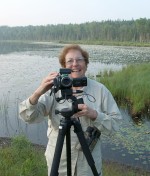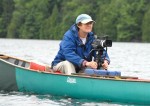Gail Osherenko (SBC) recently completed production of a short video for the United Nations Educational, Scientific and Cultural Organization's (UNESCO) Marine World Heritage Program. The title of the video is "Our Marine World Heritage" (you can view it on VIMEO at www.vimeo.com/16514572). We asked Gail to share a few tips on what it takes to make such short video clips.
So how did this project come about?
I met Dr. Fanny Douvere when I put together an NCEAS (National Center for Ecological Analysis and Synthesis) project on Marine Spatial Planning (MSP) and the Role of Ocean Zoning a few years ago. She was then doing MSP in Belgium, but recently became the director of the Marine World Heritage Program of UNESCO. Dr. Douvere knew that I had started to make videos and asked me at the American Association for the Advancement of Science (AAAS) meeting last spring about making a short video on the Marine Program for their website.
Few people know that there are 43 marine sites among the 900 World Heritage Sites designated. The video illustrates the various criteria for nomination and inscription of ocean places on the WorldHeritage List, briefly mentions some of the threats to these places, and provides an engaging introduction to the Marine World Heritage Program's website. Video footage and stills come from various sources that we were able to locate.
How expensive is the process?
More expensive than I initially estimated. Generally, one should figure $1,000 per minute of finished video (minimum), but can cost a lot more.
What kind of effort in time and energy does it require?
Considerable. I didn't shoot any of the footage for the video, but it took us several months to obtain high quality footage and still photos from various sources (much of it provided gratis) and to get the appropriate permissions. Learning to make a video, even a short one, is time-consuming. I acquired the skills by hiring and working side-by-side with experts. I've also taken documentary film classes offered for free through Santa Barbara City College.
Any specialized knowledge or equipment? Did you have to hire a professional or rent equipment?
I specialize in docuscience videos and have made two professional films (Arctic Expedition and Dark Side of the Loon) as well as a variety of short pieces for YouTube. I edit using the industry standard, Final Cut Pro, and hire an expert to trouble shoot and provide technical advice on an as-needed basis. The narrator for Our Marine World Heritage is a professional actor from Ventura, Chard Hayward, who is particularly well-known in Australia. We recorded the narration in a professional studio with a professional audio technician.

 Enlarge this image
Enlarge this image
